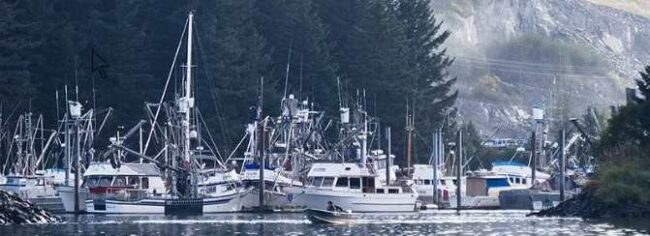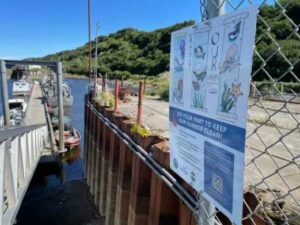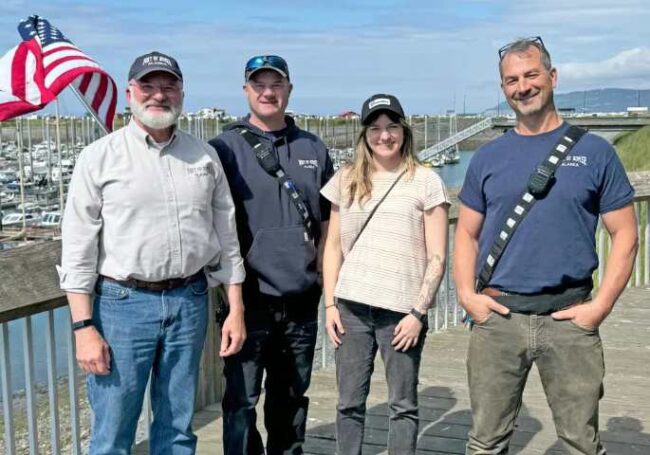
Whether working, playing, or traveling, spending time on the water is a way of life for many Alaskans. Alaska’s small-boat harbors play a crucial role in their communities, creating economic opportunities in tourism and shipping, providing access to commercial and subsistence fishing, and serving as hubs for cultural and recreational activities.

Photo by Melissa Good/Alaska Sea Grant.
The Alaska Clean Harbors (ACH) program unites harbor managers, communities, and boaters to collaborate toward a shared goal—to mitigate environmental impacts and promote sustainable practices within Alaska’s maritime infrastructure. This voluntary non-regulatory program operates statewide, assisting harbor managers and communities in minimizing pollution and waste in harbors and waterways.
Alaska Sea Grant State Fellow Biz Wallace visited participating harbors this year to better understand their unique challenges and provide solutions to common issues. Wallace was impressed by the dedication of harbor managers and communities in preventing pollution and appreciated the practical, collaborative nature of their efforts. Through her site visits, ACH was able to offer tailored waste solutions, such as pet waste stations and signage for oil spill prevention. She is excited about the program’s future and hopes to see it continue to grow.
Alaska has three certified harbors—Juneau and Seward recertified in 2023, while Yakutat achieved certification for the first time in 2024. Valdez and Homer plan to recertify later this year, and Dillingham, Dutch Harbor, Kodiak, and Whittier are on track for first-time certification. To be certified as an Alaska Clean Harbor, a facility must conduct a self-assessment and complete the ACH checklist, which includes federal and state legal requirements and best management practices aimed at pollution prevention and waste reduction.
In response to feedback, ACH has introduced a new tiered certification plan that adapts to each harbor’s capabilities and resources. This plan consists of three levels, Silver, Gold, and Platinum, with specific requirements for each. For example, a harbor aiming for Silver certification must meet all regulatory requirements and complete three out of twenty items in the Harbor Operations category. These tasks may include posting signage, collecting trash, and properly storing fuel and hazardous waste, tailored to each harbor’s capacity. The checklist is designed to evolve in response to changing environmental conditions and the needs of coastal communities, ensuring continued relevance and effectiveness.

Initiated in 2007, with support from the Alaska Department of Environmental Conservation (DEC) and the Cook Inlet Regional Citizens’ Advisory Council, ACH offers free technical assistance, tools, and resources to help harbor staff protect Alaska’s waters. The program also engages boaters across the state through outreach events and festivals. Currently, ACH is managed by an advisory committee comprised of harbor managers and water quality experts, with support from DEC and Alaska Sea Grant.If you are a harbor manager interested in becoming certified through the Alaska Clean Harbors program, or want to get involved, visit the Alaska Clean Harbors website.
